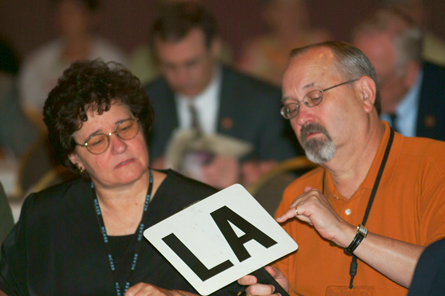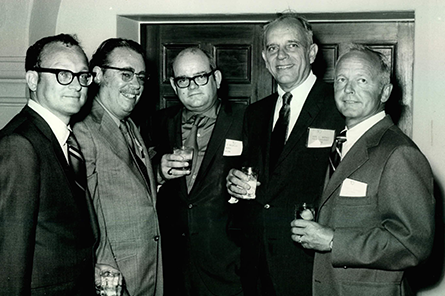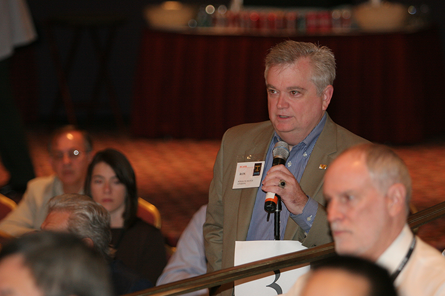Louisiana
Law Passed: 1910 • Joined NCARB: 1921 • Region 3—Southern (1965)
The Components of Licensure
Education
1910: A degree from an architectural college approved by the board is required. In 1936, the board updated its list of accredited schools.
1940: The board affirms that a five-year Bachelor of Architecture from Tulane will result in an exemption from taking the examination, but experience is still required in order to obtain a license.
1946: The law is updated to allow individuals who do not hold a degree from an approved architecture college to complete five years of experience as an alternative.
1987: A degree from a NAAB-accredited program is required.
Experience
1935: The board begins discussing a practical experience requirement. Three years of experience are eventually required.
1968: Applicants with a degree from a NAAB-accredited program must complete three years of experience, other applicants must complete eight (increased to 12 in 1975).
1979: The IDP is required.
1982: A policy is established requiring all candidates to submit their IDP record on an annual basis for review and approval. Candidates must complete the IDP before testing.
2008: Candidates must be enrolled in the IDP, but don’t need to complete the IDP, before testing.
Examination
1910: Applicants must pass an exam.
1935: The board determines that some candidates can substitute three years of experience in lieu of taking the exam.
1936: The board begins administering NCARB’s exams. In 1941, Tulane University begin administering exams on behalf of the board.
Noteworthy
The board adopted continuing education in 1992, and modified the requirement in 2011 to follow the NCARB Model Law.
In 1941, a complaint was filed with the board by an applicant who had graduated from Tulane with a degree in architecture and was not granted a license. The board contended that their rules required that applicants have three years of practical training in an office of a licensed architect in addition to the degree in order to take the examination. This case worked its way through the Louisiana judicial system, finally ending with a ruling against the board by the Supreme Court of Louisiana in 1944 because the law under which the board operated did not reflect an experience requirement for licensure. This resulted in Act 161 of 1946, which granted the board the authority to grant licenses to candidates who have passed the NCARB examination as long as substantial equivalency to that examination is established. Additionally, candidates were now required to show three years of practical experience.
The board acted as a semi-autonomous agency until 1941 when the Division of Occupational Standards was established, and is later moved under the office of the governor.
In 1946, the board established an exemption from the examination for Louisiana residents who served in World War II, were honorably discharged from military service, and graduated from an accredited school of architecture. This exemption expired in October 1952.
In 2001, a public director and educator are added to the board.
Notable People
NCARB Presidents
1946-47: Solis Seifirth, FAIA (New Orleans)
1967: Earl L. Mathes (New Orleans)
2013: Ronald B. Blitch, FAIA (New Orleans)
Additional Members of the NCARB Board of Directors
1928-29: Charles A. Favrot, FAIA (New Orleans)
1990-93: Charles E. Schwing, FAIA (Baton Rouge)
1998-00: Fabian A. Patin (Lafayette)
2016-Present: John E. Cardone Jr. (Lake Charles)
2018-Present: Katherine E. Hillegas (St. Francisville)
First Chairman/President
1910: Charles A. Favrot, FAIA (New Orleans)
First Board Members:
W. L. Stevens (New Orleans)
Allison Owen (New Orleans)
J. Y. Snyder (Baton Rouge)
I. O. Carter
First License Issued
1911: William Drago
NCARB President Medalists
2002: Joseph Brocato Jr., FAIA (Alexandria)
2007: Teeny Simmons (Baton Rouge)
2013: Katherine E. Hillegas (St. Francisville)
2014: Ronald B. Blitch, FAIA (New Orleans)
2015: John E. Cardone Jr. (Lake Charles)
2018: Judith A. Kinnard, FAIA (New Orleans)


